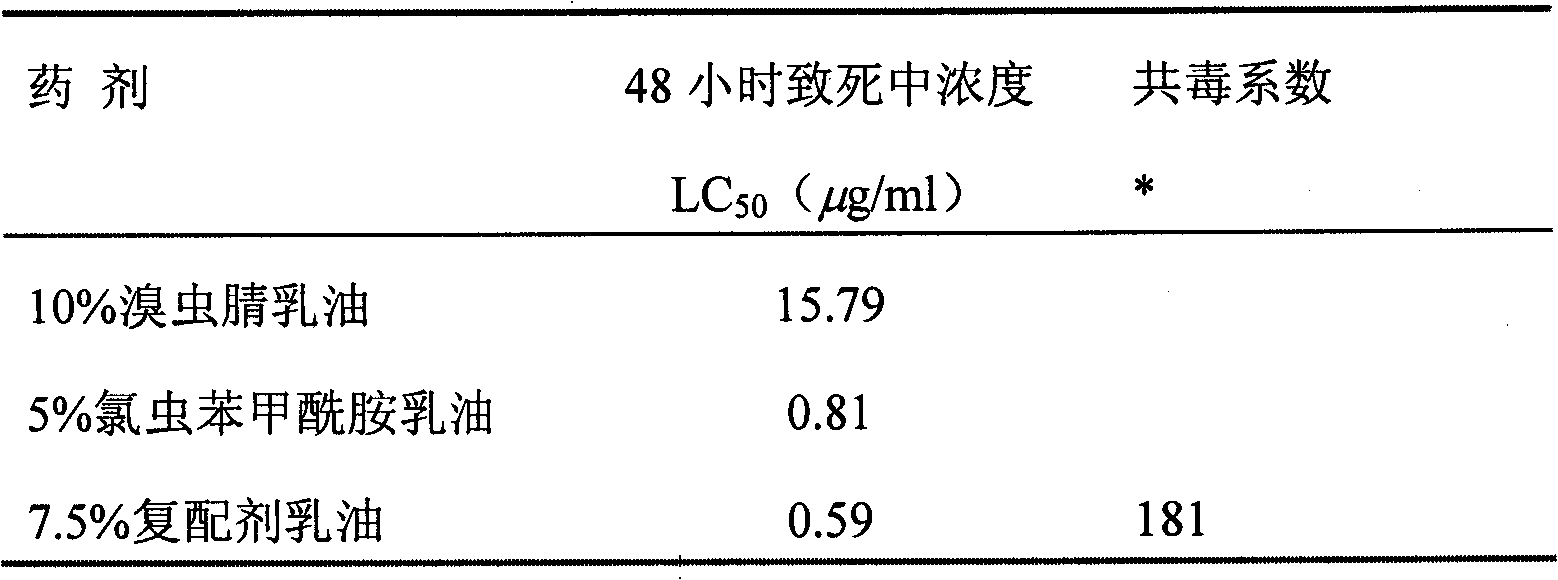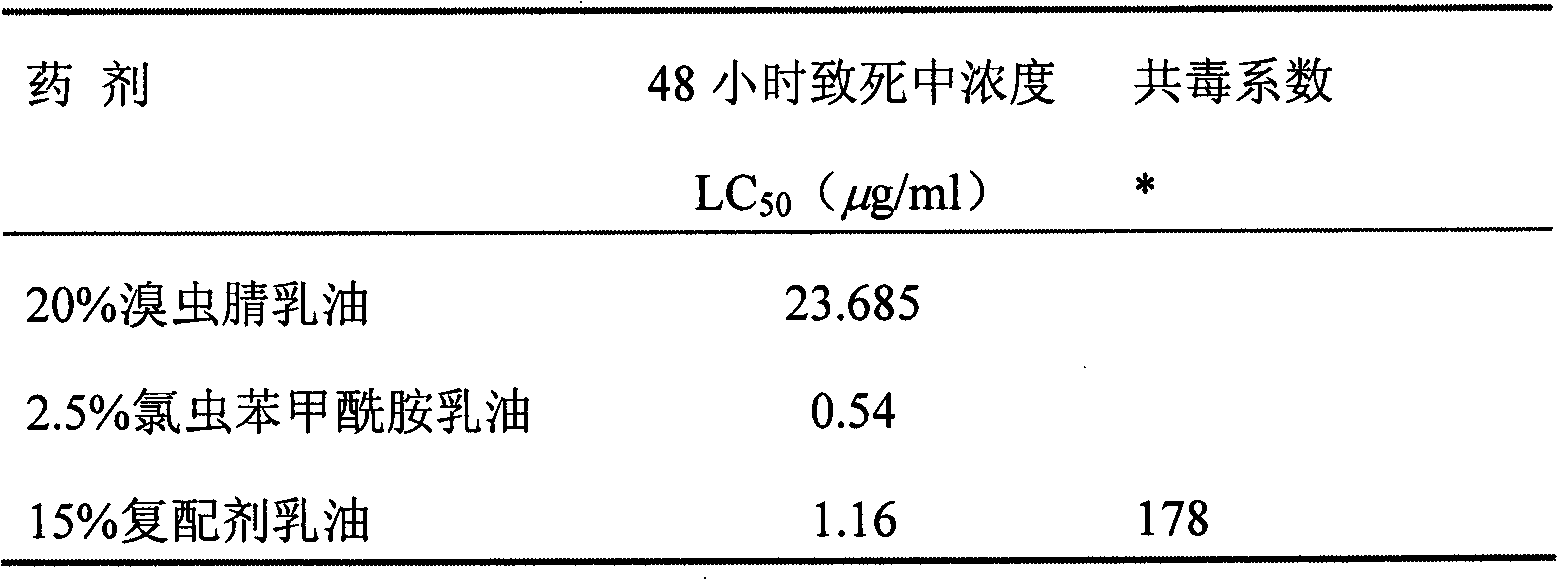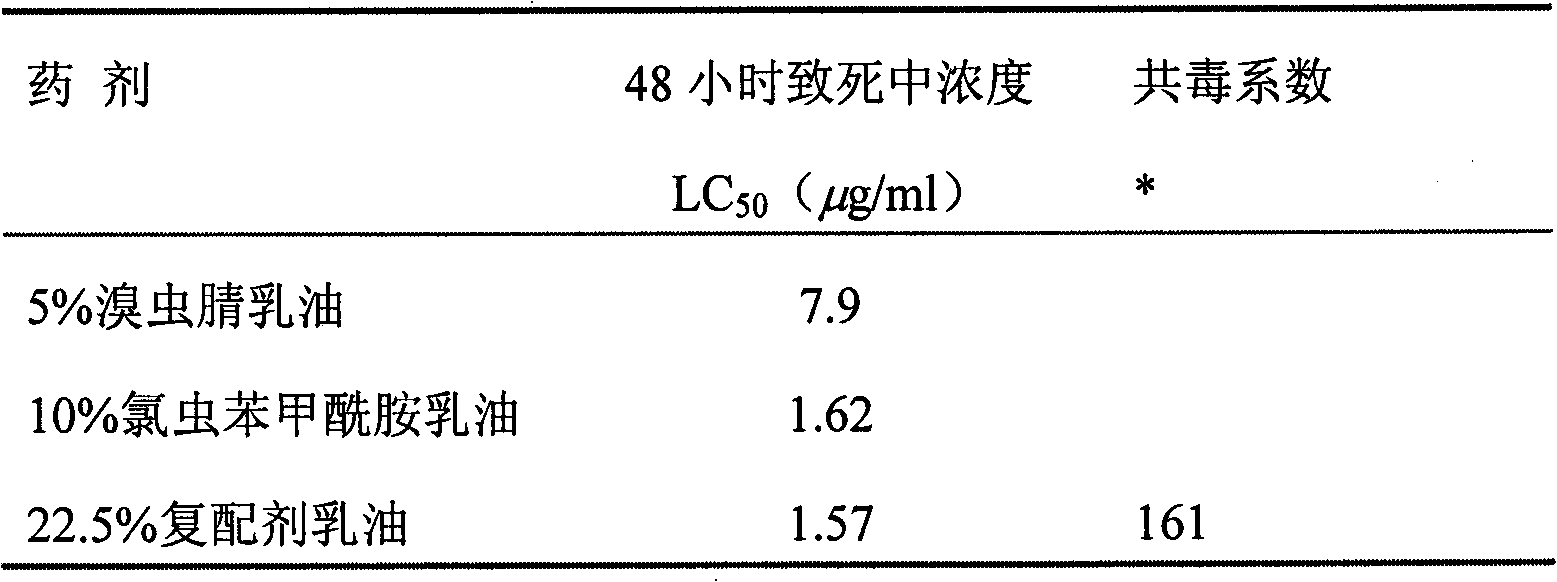Pesticide of vegetable pest
A technology for insecticides and pests, applied in the direction of insecticides, biocides, biocides, etc., can solve the problems of increased use of pesticides, easy to produce drug resistance, and low use effect
- Summary
- Abstract
- Description
- Claims
- Application Information
AI Technical Summary
Problems solved by technology
Method used
Image
Examples
Embodiment 1
[0012] (1) 10 grams of chlorfenapyr EC with a concentration of 10%, as a control agent, the original drug sample is provided by the manufacturer, and the EC is prepared by itself.
[0013] (2) 5 grams of 5% chlorantraniliprole emulsifiable concentrate, as a control agent, the original drug sample is provided by the manufacturer, and the emulsifiable concentrate is prepared by itself.
[0014] (3) The concentration is 15% for the preparation of the test agent. 10 grams of chlorantraniliprole technical (100 percent) plus 5 grams of chlorantraniliprole technical (100 percent), plus 15 grams of emulsifier and 70 grams of xylene to form a 100-gram compound.
[0015] 2. Test method:
[0016] The method of soaking leaves is used, that is, the three tested agents are diluted with water in multiples, the concentration range of 10% chlorfenapyr EC is 200-12800 times, the concentration range of 5% chlorantraniliprole EC is 4000-64000 times, and 7.5% compound The concentration range of ...
Embodiment 2
[0023] (1) 5 grams of chlorfenapyr emulsifiable concentrate with a concentration of 20%, as a control agent, the original drug sample is provided by the manufacturer, and the emulsifiable concentrate is prepared by itself.
[0024] (2) 10 grams of 2.5% chlorantraniliprole emulsifiable concentrate, as a control agent, the original drug sample is provided by the manufacturer, and the emulsifiable concentrate is prepared by itself.
[0025] (3) The concentration is 15% for the preparation of the test agent. 5 grams of chlorantraniliprole technical (diluted) plus 10 grams of chlorantraniliprole technical (diluted), plus 15 grams of emulsifier and 70 grams of xylene to form a 100-gram compound.
[0026] 2. Test method:
[0027] The method of soaking leaves is used, that is, the three tested agents are diluted with water in multiples, the concentration range of 20% chlorantraniliprole EC is 400-25600 times, the concentration range of 2.5% chlorantraniliprole EC is 2000-32000 times,...
Embodiment 3
[0034] (1) 20 grams of chlorfenapyr emulsifiable concentrate with a concentration of 5%, as a control agent, the original drug sample is provided by the manufacturer, and the emulsifiable concentrate is prepared by itself.
[0035] (2) The concentration is 2.5 grams of 10% chlorantraniliprole emulsifiable concentrate, and the control agent, the original drug sample is provided by the manufacturer, and the emulsifiable concentrate is prepared by itself.
[0036] (3) The concentration is 22.5% of the preparation of the test drug. 20 grams of chlorfenapyr technical (100 percent) plus 2.5 grams of chlorantraniliprole technical (100 percent), plus 13 grams of emulsifier and 64.5 grams of xylene to make a 100-gram compound.
[0037] 2. Test method:
[0038] Leaf soaking method is used, that is, the three tested agents are diluted with water in multiples, the concentration range of 5% chlorfenapyr EC is 100-6400 times, the concentration range of 5% chlorantraniliprole EC is 8000-128...
PUM
 Login to View More
Login to View More Abstract
Description
Claims
Application Information
 Login to View More
Login to View More - R&D Engineer
- R&D Manager
- IP Professional
- Industry Leading Data Capabilities
- Powerful AI technology
- Patent DNA Extraction
Browse by: Latest US Patents, China's latest patents, Technical Efficacy Thesaurus, Application Domain, Technology Topic, Popular Technical Reports.
© 2024 PatSnap. All rights reserved.Legal|Privacy policy|Modern Slavery Act Transparency Statement|Sitemap|About US| Contact US: help@patsnap.com










